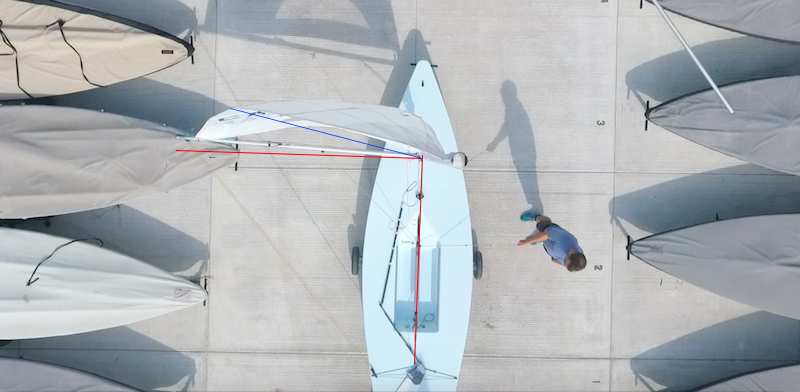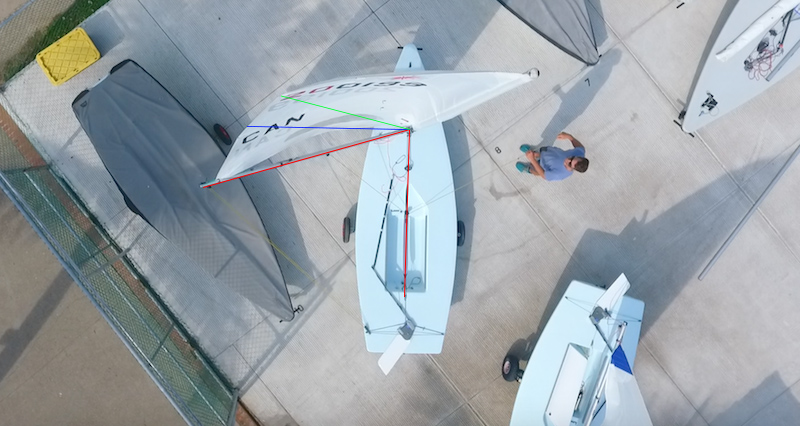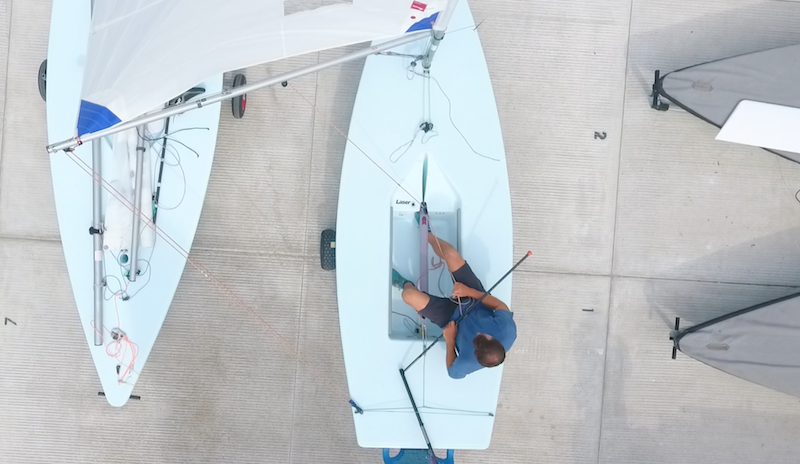Sailing downwind in Laser is an art. In big breeze, it’s survival. Some people make it look easy, but it doesn’t mean they aren’t working hard. The effort in balancing the boat is lessened if you understand what it wants to do.
In light wind, you ease sheet so that your boom is beyond 90º relative to the centreline of the boat, and loosen your boom vang so that the leech goes beyond that. The sail is baggy, twisted open, breathing and inducing lee helm. When the boat has lee helm it wants to bear away. Bearing away is great and helps to increase force in the sail by reversing the air flow across the leeward side of it. The same forces that produce Lee helm also give the boat windward heel during downwind in laser. This allows the sailors to press weight to leeward which helps create speed

In this light air set up, the boom is slightly beyond 90º from the centreline (red) and the leech of the sail opens up beyond that (blue).
The windier it gets the more sensitive helm becomes. A slight change in angle, sheet tension or boat speed and the balance of the boat can change. Knowing or predicting these changes will give you proper control. Setting up the same way we do in lighter winds will amplify the lee helm, making it more tipped to windward and want to bear away quicker. Instead, in windier conditions we would prefer to setup with more weather helm; giving us a larger range of angles, and comfortable body position.
In breeze, weather helm is best combatted by moving your body aft.
Mainsheet trim should be the main catalyst for inducing weather helm. In breeze, helm is amplified. With enough sheet on and the boom at approximately 65º-85º relative to the centreline line of the boat, the centre of effort (CE) in the boat will be aft, producing sufficient weather helm. With the boom vang eased, the leech should be twisted forward, giving the sail several angles of attack. At the top where the leech is most open, the force direction will be producing just enough lee helm. This will allow you to sail low angles and not gybe, nor capsize to windward.

In this heavier air setup, the boom (red) is roughly 70º from the centreline (blue) but we can see that the leech still opens to 90º (green).
Now that your leech is open and sheet trimmed in, the sail is forgiving and the chance of a deathroll is minimized. With this setup, you will feel a lot more weather helm and the boat will try to round up. How do you combat the weather helm without having to give up the sail trim? It’s easy, weather helm is best combatted by shifting your body aft. Moving aft puts your weight over your rudder, which shifts the centre of lateral resistance (CLR) aft and prevents the boat from wanting to round up.

Stay balanced by putting one foot under the front of the hiking strap, and the other one across the boat. Keep your butt attached to the edge of the gunnel instead of sitting on the flat part of the deck. From this position, you should have a good range of angles through downwind in laser.